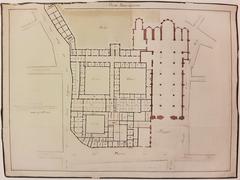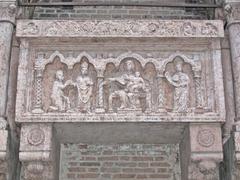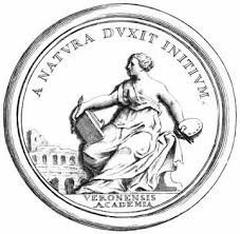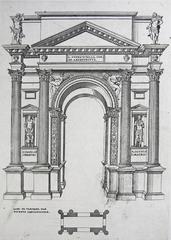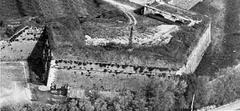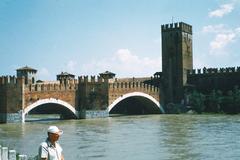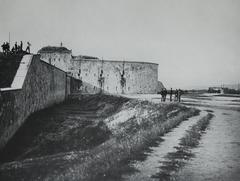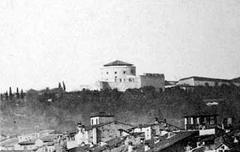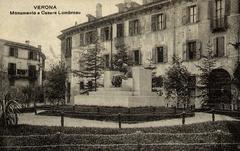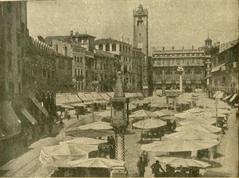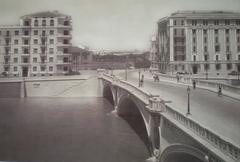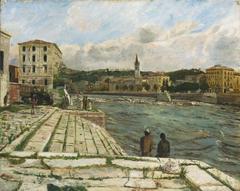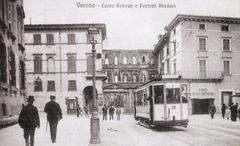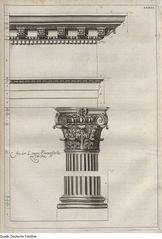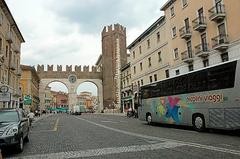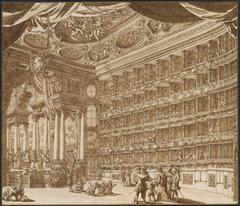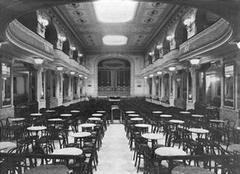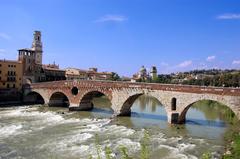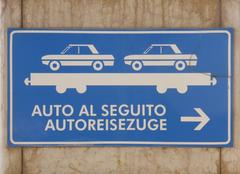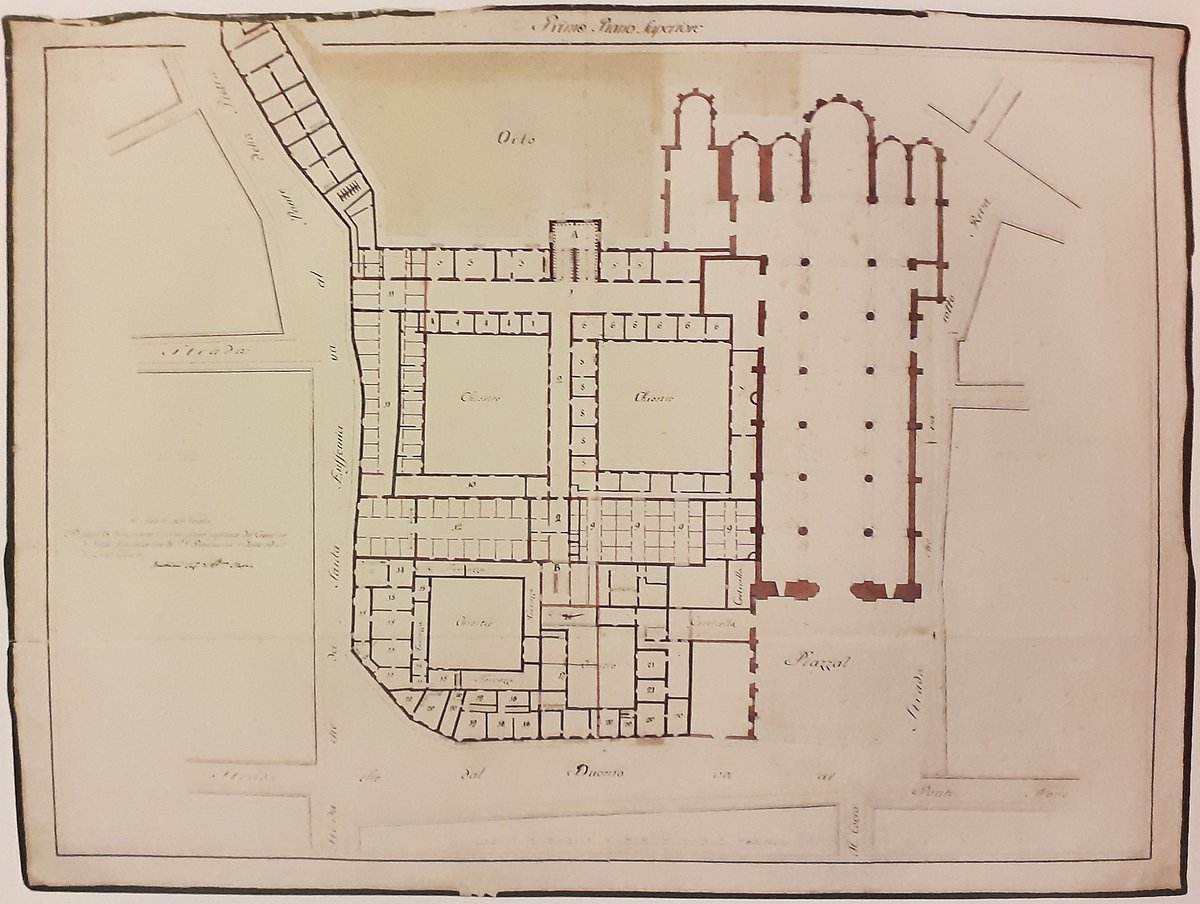
Sant’Anastasia Verona: Visiting Hours, Tickets, and Historical Sites Guide
Date: 14/06/2025
Introduction
Sant’Anastasia in Verona is the city’s largest church and a superb example of Italian Gothic architecture, reflecting centuries of religious fervor, artistic achievement, and civic pride. Constructed primarily between the late 13th and 15th centuries by the Dominican Order, the basilica’s imposing structure, stunning frescoes, and ongoing liturgical life make it a must-visit for anyone exploring Verona’s historic center. This guide provides a detailed overview of Sant’Anastasia’s history, architectural highlights, visiting information, and travel tips to help you experience this remarkable monument to its fullest (Italyscapes; Verona Tourism).
Table of Contents
- Introduction
- Historical Overview
- Architectural and Artistic Highlights
- Visitor Information
- Nearby Attractions and Experiences
- Practical Travel Tips
- Frequently Asked Questions (FAQs)
- Conclusion
- References
Historical Overview
Early Christian Foundations
The site of Sant’Anastasia has deep roots in Verona’s early Christian era. Tradition holds that two churches originally stood here, one dedicated to Saint Remigius and the other to Saint Anastasia of Sirmium, a martyr whose veneration reached Verona by the 8th century (Italyscapes). Documentary evidence from as early as 890 confirms the church’s longstanding presence and importance in the city’s religious landscape.
Dominican Influence and Construction
A transformative period began in the 13th century when the Dominicans established their presence in Verona. Invited into the city in 1260, they began constructing the current basilica in 1290. The initial phase, completed by 1320, included the apse, transept, and perimeter walls. Over nearly two centuries, the basilica grew into a monumental center of worship, with its consecration occurring in 1471 (Lions in the Piazza).
The Dominicans’ vision for Sant’Anastasia was twofold: to serve as a spiritual stronghold and to symbolize their order’s influence in the city. The basilica’s location near the Adige River and Ponte Pietra further anchored it within Verona’s urban and civic life.
Architectural and Artistic Highlights
Gothic Design and Structural Features
Sant’Anastasia is a masterpiece of the Veronese Gothic style. The church features a Latin cross plan, three spacious aisles, and monumental cylindrical columns in red Verona marble. Its unfinished façade, with exposed brickwork and a rose window, speaks to both the city’s wealth and the Dominican emphasis on humility (wikipedia; chieseverona.it).
The soaring ribbed vaults and alternating red and white marble bands inside create a dramatic and uplifting atmosphere, while large stained-glass windows, installed in the late 15th century, flood the nave with colored light.
The 72-meter bell tower, completed in the 15th century, houses nine bells still rung in the traditional Veronese style (nomads-travel-guide.com).
Frescoes, Sculptures, and Monuments
Sant’Anastasia is renowned for its exceptional works of art:
- Pisanello’s “Saint George and the Princess”: This internationally acclaimed fresco (1433–1438) in the Pellegrini Chapel is a stunning example of International Gothic painting (visitverona.it; outsidesuburbia.com).
- The Hunchbacks (I Gobbi): Two unique marble holy water fonts at the entrance are supported by hunchbacked figures, which have become local symbols and are thought to bring good luck to those who touch them (visitverona.it).
- Monumental Tombs and Altars: Notable funerary monuments include the Fregoso altar by Danese Cattaneo and the Castelbarco sarcophagus, a precursor to the city’s famous Scaliger Tombs (wikipedia).
- Chapels and Choir: The Giusti Chapel and other chapels feature works by Altichiero da Zevio, and the choir stalls were crafted by Lorenzo da Santa Cecilia.
Visitor Information
Visiting Hours
Hours vary by season and religious calendar:
- March–October:
- Mon–Fri: 9:30 am – 6:30 pm
- Sat: 9:30 am – 6:00 pm
- Sun & holidays: 1:00 pm – 6:00 pm
- November–February:
- Mon–Fri: 10:00 am – 5:00 pm
- Sat: 9:30 am – 6:00 pm
- Sun & holidays: 1:00 pm – 5:30 pm
Check the Chiese Vive Verona website for up-to-date hours, especially during special events.
Tickets and Admission
- Individual Entry: €4–€5 (check for updates)
- Verona Churches Circuit Ticket: €8 (includes Sant’Anastasia, Duomo, San Fermo Maggiore, San Zeno Maggiore)
- Verona Card: Includes Sant’Anastasia and other city attractions, starting at €27 for 24 hours
- Reduced Admission: EU citizens 18–25, €3; children under 18 and Verona residents, free (That Travelista)
Tickets are available at the entrance or online.
Accessibility
- Wheelchair Access: Ramp at the main entrance; some chapels have steps or uneven floors.
- Facilities: Benches throughout the nave; no public restrooms inside, but nearby cafés offer facilities.
- Audio Guides: Available for a small fee; check at the ticket desk.
Guided Tours and Tips
- Guided Tours: Available daily, in multiple languages. Private guides can be arranged through local operators or the Chiese Vive association.
- Dress Code: Shoulders and knees must be covered. Silence and respectful behavior are required.
- Photography: Allowed without flash. Tripods and commercial photography require prior permission.
- Best Times: Weekday mornings or late afternoons in spring and autumn for fewer crowds and pleasant weather (The Travel Folk).
Nearby Attractions and Experiences
Sant’Anastasia’s central location makes it a great starting point for exploring:
- Ponte Pietra: Roman bridge with scenic river views (That Travelista).
- Arche Scaligeri: Gothic tombs of Verona’s ruling family.
- Piazza delle Erbe: Vibrant square with markets and cafés.
- Castel San Pietro: Offers panoramic views of the city.
- Verona Arena and Juliet’s House: Both within walking distance.
Numerous restaurants and cafés nearby serve local specialties, and the riverside is perfect for a scenic stroll.
Practical Travel Tips
- Getting There: Located on Corso Sant’Anastasia, the basilica is easily reached on foot from Piazza delle Erbe. City buses and taxis are available nearby.
- Parking: Paid garages like Parcheggio Piazza Isolo and Parcheggio Cittadella are 10–15 minutes away. Be aware of Verona’s ZTL (limited traffic) zones.
- Safety: The area is well-patrolled; keep valuables secure and be mindful of pickpockets in busy areas.
- Languages: Most signage is in Italian; staff may speak basic English. Consider a guide or translation app for more context.
Frequently Asked Questions (FAQs)
Q: What are the Basilica di Sant’Anastasia visiting hours?
A: March–October: Mon–Fri 9:30–18:30, Sat 9:30–18:00, Sun 13:00–18:00; November–February: Mon–Fri 10:00–17:00, Sat 9:30–18:00, Sun 13:00–17:30.
Q: How much are tickets?
A: Individual entry is €4–€5; the four-church circuit ticket is €8; Verona Card from €27.
Q: Is Sant’Anastasia wheelchair accessible?
A: Yes, there is a ramp at the entrance; some chapels may have steps.
Q: Are guided tours available?
A: Yes, through Chiese Vive or local operators; private tours can be arranged.
Q: Is photography allowed inside?
A: Yes, non-flash photography for personal use is allowed.
Q: Where is the basilica located?
A: Piazza Sant’Anastasia, in Verona’s historic center, near the Adige River and Ponte Pietra.
Conclusion
Sant’Anastasia is not only a marvel of Gothic architecture but also a vibrant living monument at the heart of Verona’s cultural and spiritual landscape. Its awe-inspiring interiors, exceptional artworks, and central location make it a top destination for travelers. Plan your visit by checking current hours and ticket options, dress respectfully, and consider joining a guided tour for deeper insights. For more information and to enhance your experience, download the Audiala app for audio guides and interactive maps, and follow official sites and social media for updates on events and special exhibitions.
References
- Italyscapes: Basilica di Sant’Anastasia Verona
- Lions in the Piazza: Verona Architecture
- Nomads Travel Guide: Sant’Anastasia Verona
- Verona Tourism: Sant’Anastasia
- Italy Magazine: Sant’Anastasia
- Chiese Vive Verona
- That Travelista: Top Attractions in Verona
- Churches of Venice: Sant’Anastasia
- Visit Verona: History, Art, and Culture
- Wikipedia: Sant’Anastasia, Verona
- OutsidetheSuburbia: Verona in a Day
- The Travel Folk: One Day in Verona
